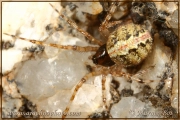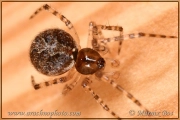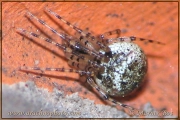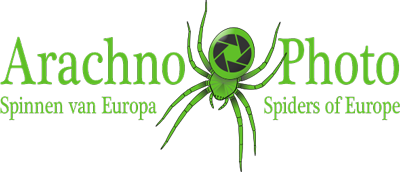The Comb-Footed Spiders belong to one of the most diverse (omnifarious) spider families of Europe and the spiders often have a typical spherical body. They are small to medium sized, and often have a shiny appearance. They build irregular webs, which can be roughly divided into two types: a coarse web of interconnecting threads, which run all over the place and a web which has a tightly woven mat in the centre. About 220 species occur in Europe, including the notorious Black Widow (Latrodectus tredecimguttatus).
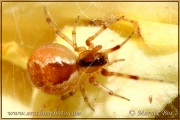
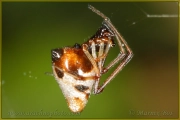
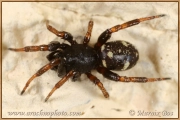
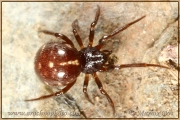
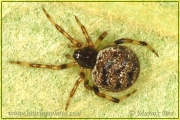
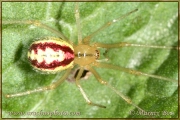
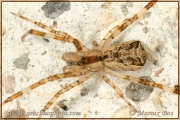
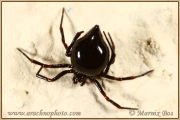
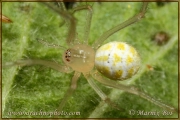
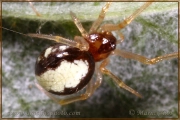
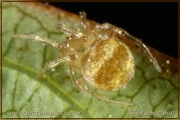
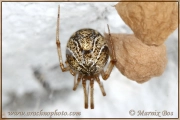
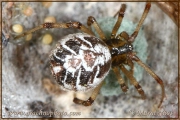
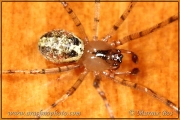
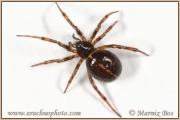
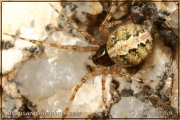
Genus Anelosimus
Anelosimus can be distinguished from the other Theridiidae by the dark band in de middle on the abdomen, which is darkest at the front side. The spider builds a coarse web of intersecting threads in shrubs or low plants. The web consists of catching threads on the outer side, which are covered with sticky droplets.
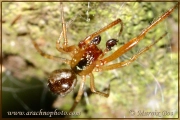
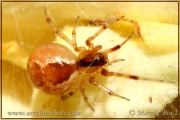
Genus Argyrodes
The spiders of the genus Argyrodes are also known as “thief spiders” (in Dutch and German). They stay in or next to the web of other, larger spiders like Cyrtophora citricola and steal the smaller prey or occasionally even the spun prey out of the retreat of the web owner. When the spider inhabits a web of Argiope -species, they sometimes wait for the web owner has caught a prey and spun it. Thereafter, she approaches gently and starts to eat from the other side of the prey. In rare cases, the web owner notices the theft and chases Argyrodes or eats it.
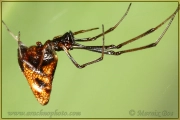
Genus Asagena
These small to medium sized spiders are closely related to the species of the genus Steatoda, to which they were previously assigned.
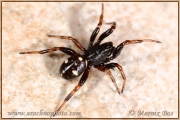
Genus Crustulina
These spiders are very small (2 mm) and have numerous tiny bumps on their carapace, giving them a rough appearance. They build small webs for example under stones. Mating takes place in spring and summer, resulting in two generations per year.
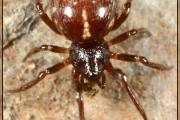
Genus Dipoena
The small spiders of the genus are relatively rare. The head region of the carapace is elevated, especially in the males. The spiders are probably almost exclusively ant hunters.
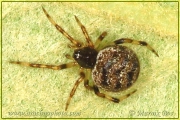
Genus Enoplognatha
This genus consists of spiders that differ very little in appearance from each other. The males of this genus have in common that they all have remarkably long, divergent chelicerae with long fangs and on the inner side a sharp protrusion.
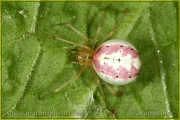
Genus Episinus
These spiders are very different in appearance from the other Theridiidae because the abdomen has a triangular shape and is relatively flat. The spider also builds a minimalistic web which consists of only three threads and it often has the shape of a constricted letter H. The lower part of the two main threads is covered with sticky droplets.
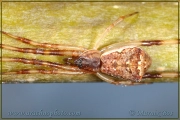
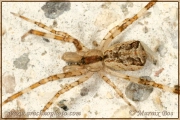
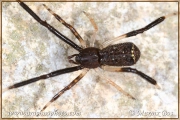
Genus Euryopis
The abdomen of these spiders is tapered at the rear. They do not build a web, but hunt freely on ants and other small crawling insects which they catch by immobilize them with silk threads. After that the spider bites the prey.
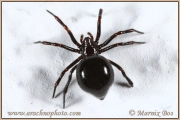
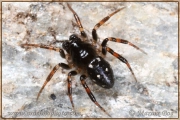
Genus Heterotheridion
Unfortunately, there is very little information available about these spiders. The genus was introduced in 2008 and contains only one species worldwide.
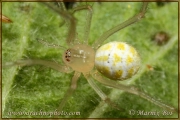
Genus Neottiura
The small spiders of the genus Neottiura have an oval abdomen and carapace. The males have a central tubercle located on the sternum.
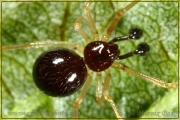
Genus Paidiscura
Unfortunately, there is very little information available about these tiny spiders. This genus contains only four species worldwide, of which three occur in Europe.
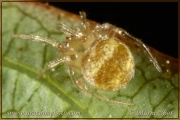
Genus Parasteatoda
The spiders of this genus have a nearly round abdomen, usually with a small bulge at the back where the spinnerets are located. The carapace is oval-shaped.
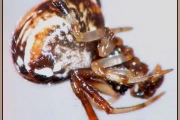
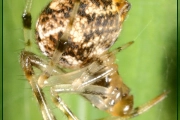
Genus Phylloneta
Unfortunately, there is very little information available about these spiders. The genus contains five species worldwide.
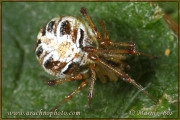
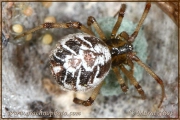
Genus Platnickina
Until 2008 this genus was known as Keijia, after which it was renamed to Platnickina. Unfortunately there is very little information available about this genus. Only two species occur in Europe.
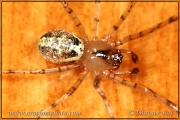
Genus Steatoda
The spiders of this genus are very varied in appearance, but almost all have a curved white or light-coloured band along the front of the abdomen. They build a coarse web of threads running up and down. The bottom threads have sticky droplets. The spiders of the genus Steatoda are also known as False Widows, since they resemble the (European) Black Widow to a greater or lesser extent. However, this spider belongs to a different genus, called Latrodectus.
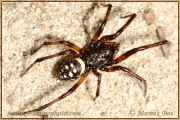
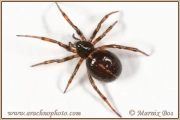
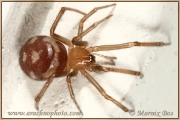
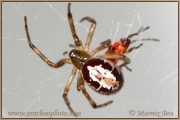
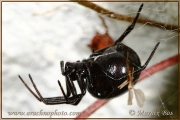
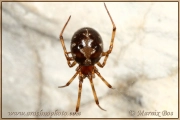
Genus Theridion
Most spiders of this genus have a distinctive pattern of triangular shapes on the abdomen, which looks a bit like a simplified Christmas tree. The web is coarse and dome-shaped with a central bowl-shaped retreat. The spiderlings hatch in August and at first are fed by means of mouth-to-mouth by their mother. Later she dies and she usually serves as food for her offspring herself to give them a good start in life.
